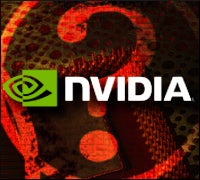 |
An analyst report has resurrected a rumor that’s repeatedly died and is reborn like a phoenix — that GPU vendor nVidia is looking to enter the x86 market.
Such rumors are repeatedly shot down by the vendor, but then again, the landscape has also changed for nVidia in recent months.
nVidia (NASDAQ: NVDA) focuses on graphics processing units (GPUs) but does have its own CPU business in the form of Tegra, a processor that combines its GPU technology with the ARM CPU it has licensed. The company has positioned Tegra has a processor of choice for things like mobile Internet devices and smartphones.
But CEO Jen-Hsun Huang has dismissed talk of nVidia entering the x86 CPU market in the past. Jon Peddie, president of Jon Peddie Research, said that about a year ago, Huang told him, “Why would I want to be the fourth x86 supplier?”
Though, there’s also talk of nVidia purchasing the No. 3 x86 vendor, VIA Technologies. VIA has a low-power processor called the Isaiah but only has about 1 percent market share. That rumor, too, went nowhere.
The newest scenario, as painted by Broadpoint AmTech analyst Doug Freedman in a research letter, has nVidia taking the build approach instead of buying — and it might seem likely because the company has been quietly hiring former employees of Transmeta, the defunct x86 clone vendor.
The Transmeta processors were designed for low-power but never took off in earnest. In retrospect, the company may have gotten more attention because it had employed Linux creator Linus Torvalds than for its impact on the market
“We believe that nVidia has hired former Transmeta staff extensively, and that instruction code ‘morphing’ requirements have declined as more x86 instructions have come off of patent coverage,” Freedman wrote. “We believe internally developed x86 solutions are more likely than external acquisitions (i.e. VIA Technologies).”
Freedman felt nVidia would become a supplier of x86 CPUs “by necessity to preserve both GPU and chipset revenue.”
Its chipset revenue is threatened by the demise of the product category, as chipsets’ functionality moves onto CPUs. It’s also hampered by a legal tussle with Intel, forcing nVidia to suspend its development of Nehalem chipsets.
And Huang may not want to be a chip supplier, but an x86 core could suit his needs even in the GPU computing space.
At the GPU Conference where he launched nVidia’s Fermi next-generation graphics architecture, he outlined supercomputing scenarios where the GPU cores would do the heavy lifting and you’d have a single x86 core “just to boot the operating system.”
A spokesman for nVidia declined to comment on rumors and speculation.
Not competing with Intel/AMD
The assumption around nVidia making an x86 part is that it would actually sell it and compete with Intel and AMD, but the company might just use it as a third piece in a chipset supporting the GPU and avoid actually going to market with a standalone CPU.
This could result in a scenario whereby nVidia could become the supplier of everything for supercomputer systems: the CPU to start the system and load the OS, the chipset to support its CPU and GPUs, and the GPUs for major computational tasks.
Analyst opinion is split on the idea.
“That’s a cool scenario, and devilish clever, which fits perfectly with Jen-Hsun’s take-no-prisoners personality,” Peddie in an e-mail to InternetNews.com. “There is the sticky little issue of a x86 license, however, and if he really wanted to do that, he could get a clean x86 core from IBM — so why build his own?”
But Nathan Brookwood, research fellow with Insight 64, isn’t buying it.
“There’s still a ton of IP [from Intel and AMD] around the instruction set,” he said, noting one patent for an app to determine if it’s running on Intel or AMD instructions that runs through 2016.
“There are dozens of these lurking in the x86 woods, ready to pounce on the unsuspecting,” Brookwood said. “Even if you resolve the IP issues, it’s not easy to field a competitive offering. Continue to color me skeptical.”
Industry watchers will be looking for any signs of an nVidia x86 CPU on Thursday, when the company is expected to report its results.
The average from a survey of analysts by Thompson Reuters puts nVidia’s third-quarter earnings at $835.2 million and earnings per share of $0.10. Broadpoint AmTech is expecting better on the sales side of things.
“For October, we expect revenue and GAAP EPS … to beat our estimates of $846.4 million,” he said in the report. “We believe revenue growth expectations may be as high as up 14 percent quarter-over-quarter, or close to $885 million given the strong sales reports from both Intel and AMD.”


